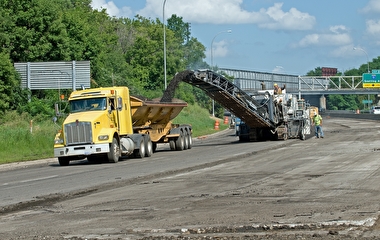
Minnesota policymakers and practitioners are committed to traffic safety, most notably through the state’s Toward Zero Deaths (TZD) program, launched in 2003. But not all drivers seem to be in sync: Fatalities, for example, plateaued in 2019 after years of steady decline—then surged in 2020 and 2021 during the pandemic.
To help address this challenge, the state legislature created a new program this year: the Advisory Council for Traffic Safety. This initiative seeks to formalize the coordination of key stakeholders and communities committed to enhancing road safety in Minnesota. The council's primary role is to develop and oversee projects, programs, and activities aimed at saving lives and preventing life-altering injuries resulting from motor vehicle crashes.
The Advisory Council model promises structure and a cohesive strategy, unifying all relevant stakeholders to tackle complex issues head-on. “The goal is to improve public safety on all roads across Minnesota and ultimately, to save lives,” says Stephanie Malinoff, CTS director of strategy and operations. She points to some of the council’s activities:
- Advise the governor and the departments of transportation, public safety, and health on policies and programs that affect traffic safety.
- Encourage state departments and agencies to conduct research on traffic safety topics.
- Review and comment on grants dealing with traffic safety.
- Make recommendations on safe road zone measures in the transportation bill.
In addition, the Advisory Council is tasked with leading the TZD program, which CTS administers. “CTS provides ongoing administrative support, coordination, and outreach activities for the TZD program, and we will continue this involvement with the Advisory Council,” says Malinoff, who leads CTS administration efforts.
Council membership includes state agency and nonprofit leaders, regional coordinators, law enforcement liaisons, representatives from various associations, and experts in the field of traffic safety. CTS director Kyle Shelton represents CTS. This multifaceted approach ensures that a broad spectrum of voices and perspectives are involved in crafting comprehensive solutions to Minnesota's traffic safety challenges.
Malinoff says members include agencies one would traditionally expect—such as the Departments of Public Safety, Health, and Transportation—and others one might not. “The Department of Education, the Department of Human Services—these are groups that haven't traditionally been involved in traffic safety conversations, at least not in great depth in Minnesota,” she says.
Minnesota made significant strides in the early years of TZD, fostering hope for achieving zero traffic-related deaths. However, fatalities plateaued from 2011 to 2019 and surged beginning in 2020. Fatalities on Minnesota’s roads rose a harrowing 37 percent in just 24 months. The preliminary total for 2022 is 444 lives lost; the goal is to cut that number to no more than 225 by 2025.
The establishment of the council represents a pivotal step in Minnesota’s ongoing commitment to achieving zero traffic-related deaths. It serves as a catalyst for renewed progress and a united front against preventable roadway crashes. By formalizing cooperation and streamlining efforts, the council hopes to see safer roads, fewer fatalities, and improved traffic safety for all Minnesota road users.
The council met for the first time in September, and the next meeting is scheduled for December 13 in Minneapolis. All stakeholders are welcome to attend. Subscribe to Advisory Council updates to get the latest news and meeting information.
—Emma McIntyre, CTS communications student

